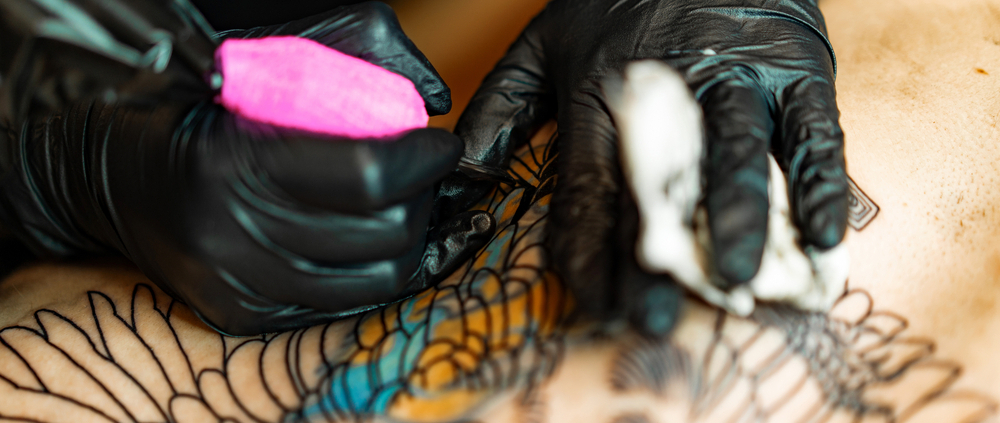Tattoo Over a Scar: What to Know, Pain Level, and More
Some people wear their scars as proudly as they would any tattoo. Others may have a different outlook and opt to have their scars covered. However, you can’t simply decide to get a tattoo and walk into Philadelphia tattoo shops expecting to get inked then and there. If you have a scar, you need to take a moment to consider how it could affect you.
There is more to covering a scar with a tattoo than what meets the eye. Let’s have a look at the process, so you can figure out if a scar tattoo is right for you.
Why Would Someone Tattoo Their Scars?
People get tattoos for a vast number of reasons. Sometimes, the individual doesn’t like the way a scar appears and wants to cover it up with artwork. Some are more comfortable with a tattoo than with their bare skin. When people survive something harrowing, such as breast cancer, they might get a tattoo to show that they beat the disease and are proud of what they accomplished.
As said, people get tattoos for all sorts of reasons; and there is no wrong reason to cover a scar.
Does Tattooing Over a Scar Hurt More?
Each person has their own level of pain tolerance. Some will handle pain much better than others. Yet, when you have scar tissue, it generally makes the pain of a tattoo much worse than what happens with unblemished skin. The location of the scar could also amplify pain from tolerable to mind-numbing in seconds.
The bigger, deepest scars are the ones that hurt the most when tattooed, particularly if the scars have resulted in nerve damage. Superficial scars, on the other hand, will hurt less because there is less nerve damage.
That is why no seasoned tattoo artist from Philadelphia tattoo shops will ink someone without examining scars first. Different types of scars can make tattooing impossible.
How Scars Affect Tattooing
The scar type has a direct influence on how ink will take. Here are the four kinds of scars that tattoo artists pay special attention to:
- Hypertrophic scars – Resulting from superficial injuries and burns, hypertrophic scars are often elevated above the surface of your skin and look red. After about a year of healing, a hypertrophic scar is capable of being tattooed. A fully healed hypertrophic scar won’t hurt much during the tattoo session, either.
- Atrophic scars – Soft and located beneath the surface of the skin, atrophic scars are like those made from stretch marks, cuts, surgical procedures, acne, and chickenpox. As long as atrophic scars are healed, they don’t pose any risk during tattooing, but you may need a colorful design to hide the discoloration of your skin.
- Keloid scars – These scars form after a serious injury, have an irregular shape, and are thick, raised, and red. Keloid scars take about 3-5 years to heal completely. They should never be tattooed before getting fully healed. Otherwise, the scar could get reopened and irritated. Keloid scars also require larger, more intricate designs to be successfully covered.
- Skin-removal and amputation scars – Usually, the scarring around such a site is smooth and light. The skin is easy enough to tattoo, but because of the possible nerve damage, the pain may be too severe to continue.
Considerations About Getting a Scar Covering Tattoo
Because covering a scar with a tattoo is influenced by the scar itself, you need to understand how it affects the entire process.
You always want to get a professional consultation at a reputable tattoo shop, like Oracle Tattoo Gallery. Openly discuss with the artist how long you have had the scar and what type of scar it is. This will help the artist figure out if your design is doable.
The depth, texture, color, and size of your scar is also going to impact the design. Ultimately, the tattoo won’t hide a scar completely. You will still be able to feel and see it in some parts. Also, the design is going to be blurred or feathered around the tattoo. This is also called a blowout, where the ink penetrates the skin more deeply and spreads beyond the lines.
After you have received your scar-covering tattoo, it is normal for the skin to be irritated, raised, and sore. Wait a few hours for the scar tissue to calm. If the tissues start to hurt severely, oozes, or is red for more than a few days, visit the tattoo artist or your primary care doctor for answers. You could have an infection.
When Shouldn’t You Get a Tattoo to Cover a Scar?
There are a couple of instances when tattooing over a scar is neither safe nor recommended:
- Fresh scars – Never get a tattoo over a newly formed scar. Not only could this introduce complications with the healing of both the scar and tattoo, but you could also get an infection.
- Sunburned skin – If your skin is the color of the freshly cooked lobster, or your scar has been badly sunburned, you should reconsider getting a tattoo over that scar. Wait for the skin to heal from the burn and be sure to discuss getting a tattoo with your artist.
- Low immunity – A strong immune system is essential for a scar-covering tattoo to heal properly. When your immune system is weakened, the tattoo won’t heal properly, and that could lead to infection or other complications.
Final Thoughts
Tattoos and scars have a lot in common. Both of them leave a mark on your skin, and both are beautiful in their own unique way. Yet, while many scars could have a traumatic story involved, tattoos often give people a much more positive outlook. So, if you want to get a tattoo to cover a scar, there is hardly anything stopping you.
Be sure to have a consultation at Oracle Tattoo Gallery to determine if your scar can be tattooed. A professional tattoo artist will be able to weigh your options and any risks involved.



